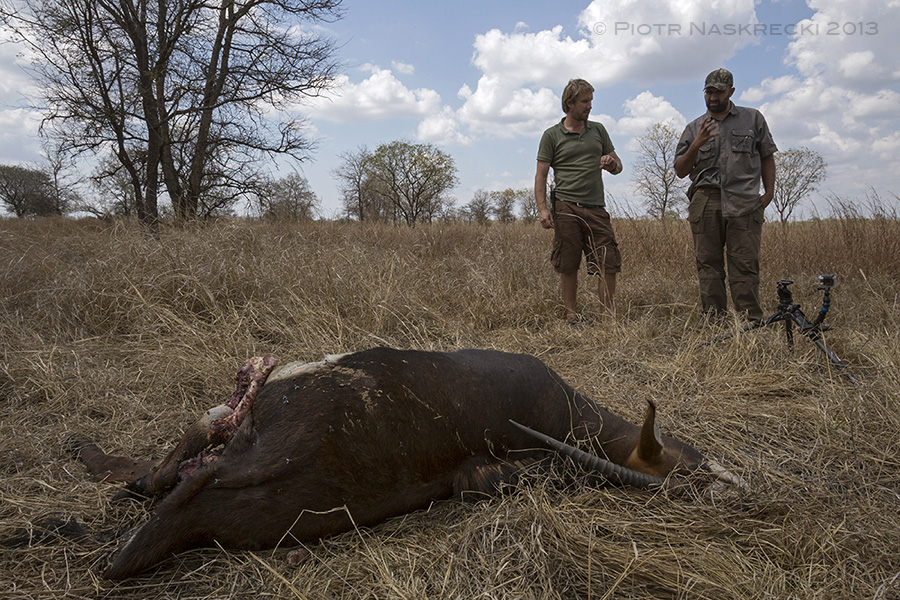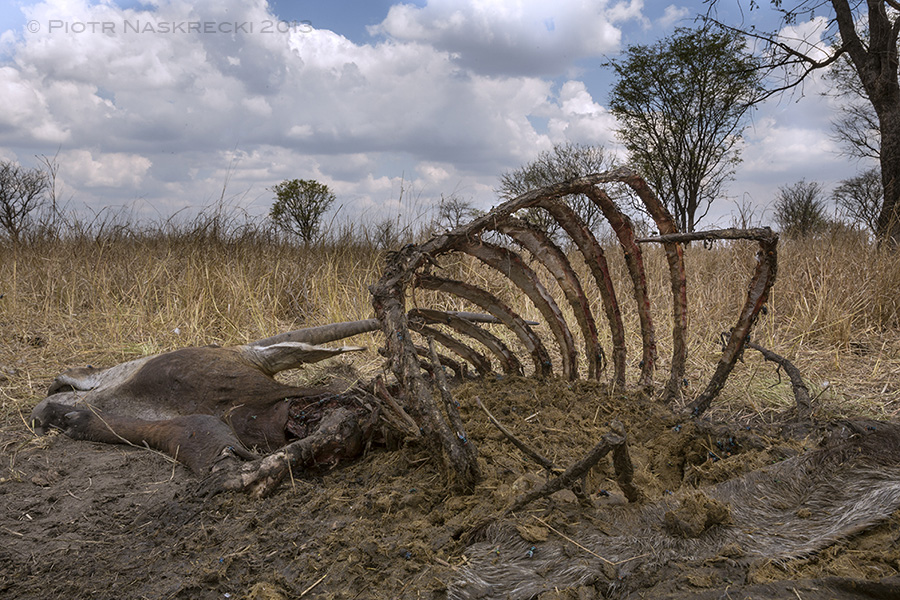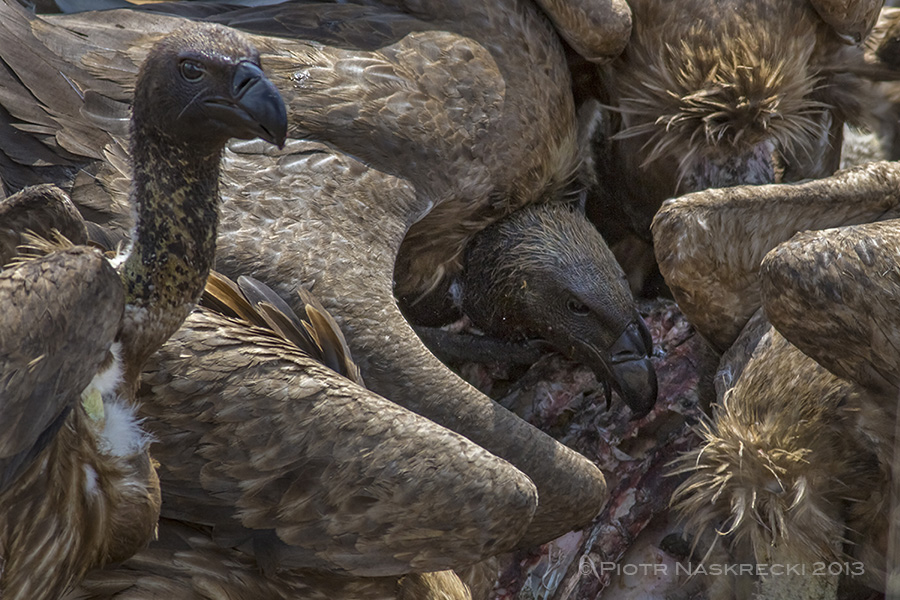
I had a very short and uneventful tenure as a boy scout – I simply could not stand having my activities organized for me, and the idea of wearing a uniform fills me with dread to this day. But I did learn a valuable lesson at one of my camping trips: if a can of meat appears bulgy, throw it away. Botulism, a deadly disease caused by the bacterium Clostridium botulinum, is something that our immune system cannot cope with, and thus it is not surprising that our species has evolved an innate repulsion to things that are dead or putrid. This aversion protects us from getting in contact with other harmful microorganisms that cause such diseases as salmonellosis, anthrax, or cholera. Unfortunately, the same revulsion also makes us consider creatures that are resistant to the deadly effect of these pathogens with disdain. We tend to treat animals that feed on carrion or dung as the lowest possible forms of life, oblivious to the fact that necrovores and coprophages’ immune system and their efficiency in procuring nourishments are far superior to ours.
Two events in 2013 made me think about the legions of these underappreciated, but critically important, members of animal communities. The first one was the biological survey of the Cheringoma Plateau in Gorongosa National Park, which I lead in April and May. Among many groups of organisms that we surveyed were dung beetles, heroically sampled by Bruno de Medeiros, who had to withstand countless, painfully repetitive jokes about his “bait.” But in the end Bruno proved not only that Gorongosa had a surprisingly rich fauna of these insects, indicative of a rich and diverse fauna of vertebrates, but also that some of the beetles were both beautiful and had fascinating behaviors. An earlier post on this blog mentions some of these findings.

I went back to Gorongosa in September and this time I was privileged to witness another remarkable, yet blatantly underappreciated animal in action, the vulture. Seeing them feeding on a carcass of an antelope killed by lions was for me the highlight of 2013. Which is saying a lot, considering that this year I have also seen centipedes with feathers, the cat mantis, frog-eating spiders, bomb-sniffing rats, and ants that cannot walk. Vultures are birds, I know, but I feel that they deserve being considered honorary members of the Smaller Majority on account of the low esteem in which they are generally held – just like most things that look or behave in a way that is unlike us, mighty humans.

But vultures, two unrelated groups of birds that have converged on similar appearance and behavior, are both fascinating and remarkably beautiful. In the New World members of the family Catharitidae and in the Old World some members of Accipitridae have evolved the ability to locate and feed on carcasses of large vertebrates. In order to do this they had to acquire the ability to sniff them out from many miles away, a feat that they were able to achieve through extremely well developed olfactory tubercles in their nasal cavities, scrolled and lined with epithelium innervated by the olfactory nerve. Interestingly, early naturalists speculated that vultures’ ability to find carrion was due to the possession of a mysterious “occult sense.” More pragmatic and rational scientists realized that vultures’ incredible sense of smell can be put to a good use, and in late 1930s the Union Oil Company began to inject mercaptan, a compound produced by rotting flesh, into gas lines in order to patrol them for Turkey vultures attracted to leakages from damaged pipes.

Even more impressive is the vultures’ ability to resist the toxins produced by C. botulinum, Salmonella, Bacillus anthracis, Vibrio cholerae, and other deadly pathogens. Their first line of defense is, surprisingly, avoidance of rotten meat. Contrary to popular belief vultures prefer meat of freshly killed animals, and will eat old, decaying flesh only if absolutely desperate. But even if they consume meat infected with these bacteria, the extremely high acidity of their stomachs kills almost anything that might have been alive in the carrion. Gastric fluids in vultures have pH levels of 0.2-0.8 – essentially equivalent to pure hydrochloric acid (in humans it usually ranges between 2.0 to 3.5.) This high acidity also allows them to digest bones, and the Bearded vulture (Gypaetus barbatus) is the only vertebrate feeding exclusively on bones (even spotted hyenas eat bones only occasionally). But on top of this vultures have incredibly efficient immune response to pathogens, making them virtually impervious to infections and diseases. This fact is not lost on some, and in Colombia drinking vulture blood is considered an effective cure for cancer (albeit the efficacy of such a treatment has yet to be evaluated by the medical community).
Like cruel children who mock those among them who are different and often more talented, our entire species picks on those organisms that don’t conform to our notions of normalcy. We tell ourselves that dung beetles and vultures are disgusting, but I think that deep down we are just jealous.

Happy 2014!

True. I’m from Colombia and I remember for a while they were concerned about vultures disappearing for being hunted to “treat” cancer.
Really Good Stuff man! I loved your information on the experience with the assassin bug!
Interesting post. I wonder if anyone has looked for antibiotic mechanisms/compounds in vultures?
I also left the souts (or cubs) pretty soon after I joined, but learnt to tie a few knots first!
Wonderful post. Check out this Egyptian vulture, aka “Pharaoh’s Chicken,” painted by bird artist Matt Adrian, and tell me they aren’t radiant:
http://www.mattadrian.com/2h9c19ux415yl7mq72ej9owncxh184
Wow Tom, thanks for this link! Beautiful painting, and it REALLY looks like that in real life.
Reblogged this on Mark Solock Blog.
Fascinating post Piotr, and I loved the reference to C. botulinum (brings back memories from my military service…)
I will join Sean and say that in the Middle East too the Griffon vulture (Gyps fulvus) populations are in worrying decline. However, if I recall correctly this is not due to a lack of food, but because of other anthropogenic causes, for example electrocution from power lines and, an even more serious problem – due to poisoning. Many vultures will approach to feed from a ‘pest’ animal that died of secondary poisoning by ranchers, like a jackal or wolf, and will die from accumulating toxins. Disturbance during breeding is also a common problem – there have been records of Egyptian vultures (another impressive bird!) stealing eggs from the nests of Griffon vultures.
By the way, I do not think these birds are ugly in any way, seeing them in the wild is one of the best experiences one can have!
Thanks for starting my new year off on the right track. Learning something new.
I’ll certainly admit there is a resemblance, but you are simply not being fair to the White-headed’s beauty in calling it a doppelgänger.
Thanks for this post Piotr! I share your love of vultures, and think that we are just beginning to discover their amazing behavioural and molecular abilities.
It is a tragic fact that a majority of Asian vulture species, as well as many African ones are in severe decline due to anthropic insults. In Asia, the precipitous decline has been linked to use of anti-inflammatories in cattle, and in Africa direct poisoning of carcasses to kill predators is to blame. The Americas are not much better on these fronts; direct persecution and the widespread use of lead ammunition has lead to declines in two condor species.
The California condor would not have a hope without direct feeding of the wild birds, nor would many European vulture species. These declines are a big wake-up call that all is not right with our environment.